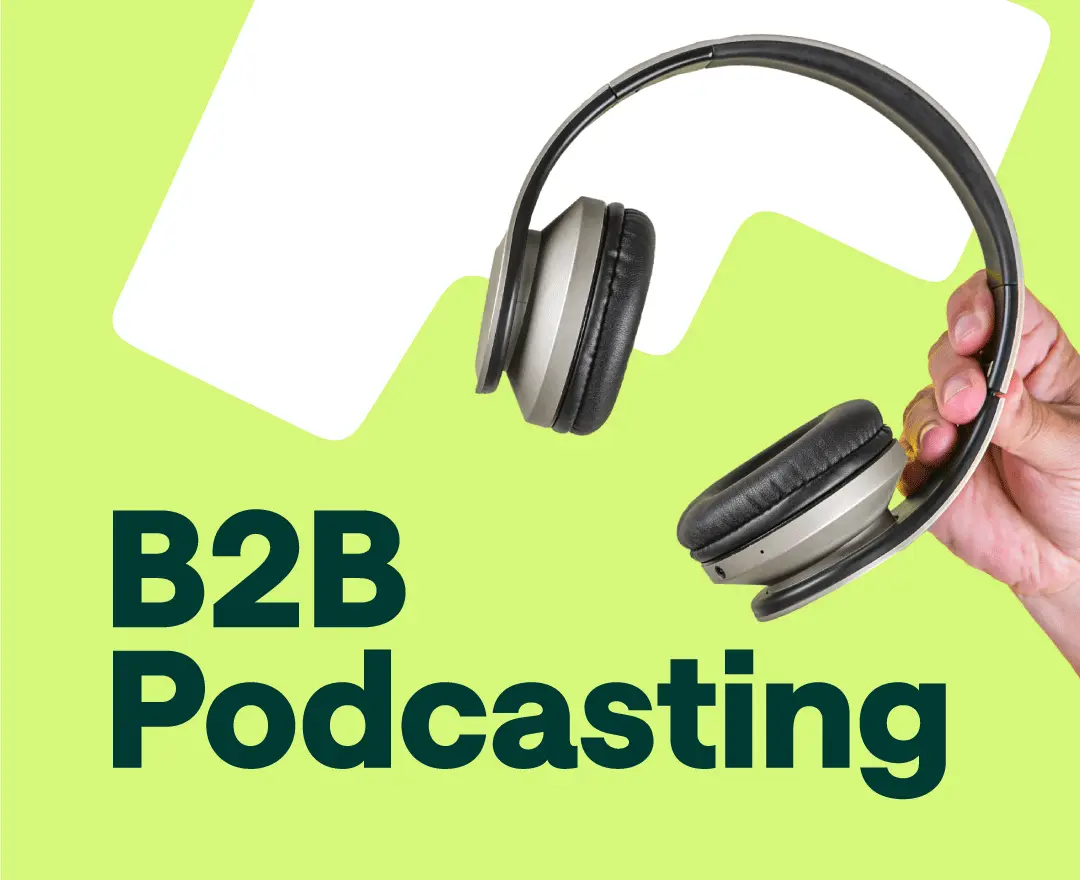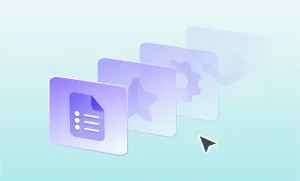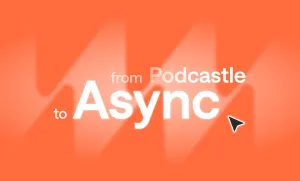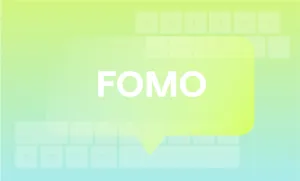Podcasting has been around. But is it a viable marketing tactic to help promote your B2B business? Well, 55% of business owners and founders and 51% of executives and people in leadership roles listen to podcasts daily.
As a B2B company owner, you want to get in front of them and convert them into your leads and customers.
In this post, we’ll look deeper into podcasting for the B2B industry. Learn how to create a podcast that attracts decision-makers and business owners and turns them into your clients. Let’s begin!
What is B2B Podcasting?
This podcast type refers to businesses like yours publishing podcasts tailor-made for prospects who also own businesses. B2B podcasting helps leverage your authority and knowledge in the industries in which you specialize. Most successful B2B podcasts narrow their focus on business topics, strategies, and insights relevant to their expertise.
Your podcast episodes must encourage prospects to listen and engage with their content. They should also help expand your customer base and potential clients, whom you should convert into customers soon.
B2B Podcasting Types and Examples
There are three ways to approach B2B podcasting for your organization. For best results, use the different ways featured below to maximize your podcast results based on your goals.
1) Solo
In this type, you’re the only one talking in the podcast as you share insights about topics that your audience will find interesting and useful.
An example of a solo B2B podcast is Selling Made Simple And Salesman Podcast by Will Barron of Salesman.com, an online community dedicated to helping salespeople generate more revenue for their businesses through frameworks and assessments. He shares his insights about the latest sales trends and how listeners can navigate through each one successfully.
This approach only requires you to gather your ideas and deliver them to the microphone, that’s it! On the downside, solo podcasts tend to underperform unless you are already an established authority in your industry. Since people aren’t familiar with you, there’s a low chance your prospects will tune in to your show, let alone find you.
2) Interview-Based
This approach heavily leans on podcasting’s relationship-building aspect. You invite a person of interest to your audience for a site-down chat with you in your podcast studio, via Zoom, or similar.
This is what we at On The Map Marketing do. In our podcast Law Firms On The Map, we mostly interview people in the legal and marketing industries to share their lawyer marketing techniques and address issues in their day-to-day business.
This podcast type is ideal if you’re a beginner who has yet to build an audience. Inviting established guests to your podcast lets you tap into their fans and followers, allowing you to get more listens and downloads. However, getting people to guest on your podcast is one of the main challenges interview-based podcasts present.
3) Panel
Similar to the solo method, this type has more than one host who will discuss the episode’s topic. Get people in different departments of your organization to talk about your industry's latest trends and news.
B2B Growth is an example of a three-panel podcast hosted by people at Sweet Fish Media that discusses what B2B marketers are talking about and shares their two cents about them on each episode.
Unlike solo, panel podcasts provide a more dynamic feel to your episodes. Assuming you have chemistry with your co-hosts, the different personalities can help your podcast establish a following much faster. However, getting listeners would still be difficult if you are a relative unknown in the podcasting world or your industry.
Benefits of Creating a B2B Podcast
There are many goals you can target and hit with your B2B podcast as a content marketing tactic. Remember that not everybody who listens to your podcast is ready to become your client. So, approach podcasting from the ground up by considering different objectives you should try and focus on instead of monetizing it immediately from the start.
Below are the benefits your organization will achieve with a well-executed B2B podcast.
- -- Thought Leadership - Position yourself and your business as an industry expert by providing valuable commentary and advice about the latest trends, news, and challenges your B2B audience is facing in the market.
-- Brand Awareness - Make people know your brand exists by consistently creating thought-provoking and actionable podcast episodes.
-- Relationship Building - Forge relationships with authoritative people in your industry whom you’ll have as guests and listeners who you can bring down your sales funnel and turn into customers.
-- Lead Generation - Attract highly qualified prospects by providing listeners with high-level strategies and solutions to their business problems while putting your products and services at the forefront.
B2B Podcasting Best Practices
Now that you have a much clearer idea of what B2B podcasting can do for your business, it’s time to know how to launch one correctly. Below are best practices you must take into heart to publish high-quality B2B podcast episodes guaranteed to attract your audience and achieve your goals.
1) Plan Out Your Podcast in Advance
You must identify how to set your podcast apart from similar ones. To determine its unique value proposition (UVP) or the statement that explains your podcast’s benefits to your audience, answer the following questions:
- -- What problems or issues does your podcast address? Or is there a gap in the market that it’s trying to fill?
-- Does your industry-specific knowledge deliver unique value to your target listener?
-- Why should they spend more time listening to your podcast than your competitors?
From here, distill the answers to all the questions above into a single sentence. Use this as a guiding principle when making decisions for your podcast.
For example, your UVP states you provide actionable strategic insights for SaaS sales teams. From here, identify the podcast types and formats you’ll use. Combining solo and interview-based episodes lets you impart personal knowledge and tap into the expertise of other influencers. Doing so allows you to deliver content guaranteed to help sales teams generate more revenue for their SaaS.
Aside from the podcast concept, you must prepare for its practical logistics. Assemble a team that will help you record, edit, and produce the episodes. Also, the number of people involved in your podcast affects how you’ll record the episodes.
A four-team podcast, for example, presents different challenges than a podcast setup for two. So, know how many will be part of your podcast and address the potential issues you may encounter before recording.
Lastly, settle on your podcast’s branding. Design its logo using your brand assets (color, typography, etc.). This helps maintain your logo’s consistency with your brand.
Ensure that the episodes align with your brand objectives and tone of voice. Straying your podcast away from your branding prevents listening from building a more personal relationship with your organization, disqualifying them from being your business advocates and clients.
2) Invite Guests Strategically
When getting podcast guests, you can’t invite anyone willing to jump into the opportunities. You must choose the right people to feature on your podcast to maximize visibility and listener count, among the other reasons listed in the image below.
To do this, determine which type of guests your target audience wants. Inviting industry thought leaders should be at the top of your list because they can help your viewership over time. However, getting them to attend an episode in your podcast depends on availability. Since they probably have other commitments, getting you into their schedule may be difficult.
This is why you should consider contacting other guests. A perfect example is current clients who worked with your business to increase their customers and revenue. They can share their situation before hiring your company and the positive results your company brought them. Doing so lets you position your product or service as a solution for their business needs.
You can also invite department heads as guests to discuss best practices and strategies. These help establish your podcast as a thought leader in the industry.
Once you have a list of whom you want to contact, you can use an email finder tool, like the one by Respona that lets you upload a CSV to bulk search emails.
3) Prepare the Necessary Equipment
The next and most important step is preparing your podcast setup. Even if you have the most talented team ready to work on your podcast, they won’t be able to produce one to the highest standards if you don’t have the right equipment, tools, and environment to make this happen.
Room
You want the room to be as quiet as possible so your podcast won’t pick up unwanted sounds that might be difficult to edit. In this case, soundproof the place using acoustic foams to negate the sound coming from the outside. Also, people should be approximately six feet away from each other in the room when recording for audio clarity.
Microphones
When choosing a podcast mic, you must do your due diligence by researching the best ones available. Since you’re new to podcasting, start with the best budget microphones. Consider buying affordable ones, especially since you’ll want to equip the hosts and guests with a mic each so you can fix their parts using your editing software.
The microphone’s position to the hosts and guests also dictates the sound quality it’ll produce for you. Position the mic to the side of your mouth so it won’t pick up excessive breath sounds. Also, place the microphone at least six inches away to prevent it from capturing popping sounds. To ensure optimal recording sound, test different mic distances and heights from you.
Audio Interface
This equipment connects to your microphone and podcast software to ensure high-quality sound from your recordings. The most basic audio interface only has two inputs for the microphone. If you have many people in your podcast, you must get one with more input or buy more audio interfaces.
Mixer
Some people sound much better on recordings than others, even when using identical equipment. So, to achieve the best and most consistent sound quality for your podcast, you need to invest in an audio mixer. It lets you customize the sound from each microphone to achieve the tone and level that matches your brand.
4) Record and Edit Your Podcast
The degree of difficulty in recording a podcast depends on your approach. A solo podcast is the simplest–just plug your mic into your audio interface and hit record. If you’re recording the podcast with a remote guest, you need podcast software to manage the recordings in a single place.
When editing the podcast, remove unnecessary noise from the recordings. This is why each person needs a mic plugged into the interface and mixer. This way, the editor can isolate the voices of each and make the necessary changes to the podcast. Also, consider rearranging sections of the recordings and trimming long parts to improve the podcast’s overall flow.
You can do all these things with Podcastle. Ensure studio-quality remote recordings for your podcast, with each guest having separate audio and video tracks. You can then edit the tracks by manually removing background noise and enhancing the audio. Or let the software’s AI tools make the changes for you with just a few clicks of a button.
5) Distribute and Market Your Podcast
Once you’re ready to publish the podcast, find a hosting platform where you can upload the episodes. The platform then creates a unique RSS feed to distribute on Spotify, Apple, and other directories when people listen to podcasts. This allows you to expand your audience and build a dedicated audience of listeners.
Podcastle works as a hosting platform for your podcast. After editing an episode from the software, you can publish and distribute it across popular podcast directories. You can also have a dedicated page published on Podcastle’s website. Not only can people listen to this page, but they can also embed the podcast episode on their websites should they wish.
At the same time, nobody will listen to your podcast if they don’t know it exists. This is where your marketing efforts come into play. Take snippets of your podcast episode and share them on social media. You can also write blog posts on your site about each episode and embed them on the posts. Then, share the blog content with your email list and social followers.
Short of Time? Then, Consider Outsourcing Some Steps From Your Workflow…
As you can see, creating a B2B podcast is a huge undertaking. In fact, setting up your recording room, the equipment you need to secure, and recording and editing the episodes require more than one person to do them correctly. As mentioned, building a team to help you secure guests, mix the podcast’s sound levels, and market your episodes is ideal.
As for podcast recording and editing, Podcastle makes your life much simpler. Get up to 10 remote guests and record professional-sounding episodes using the software, even if you’re relatively new to podcasting. You can even edit the tracks from the platform or use AI to help you make the changes for each with just a few clicks.
About the Author

|
Kristaps Brencans started as a project manager at On The Map Marketing in 2015 and now runs the day-to-day operations as the company’s chief executive officer. Under his leadership, On The Map Marketing has become a notable law firm marketing agency serving 300+ active clients in their portfolio, growing from $4M annually in 2020 to $6M today. He’s also a proud parent of three divas and is keenly interested in running and calisthenics. |








